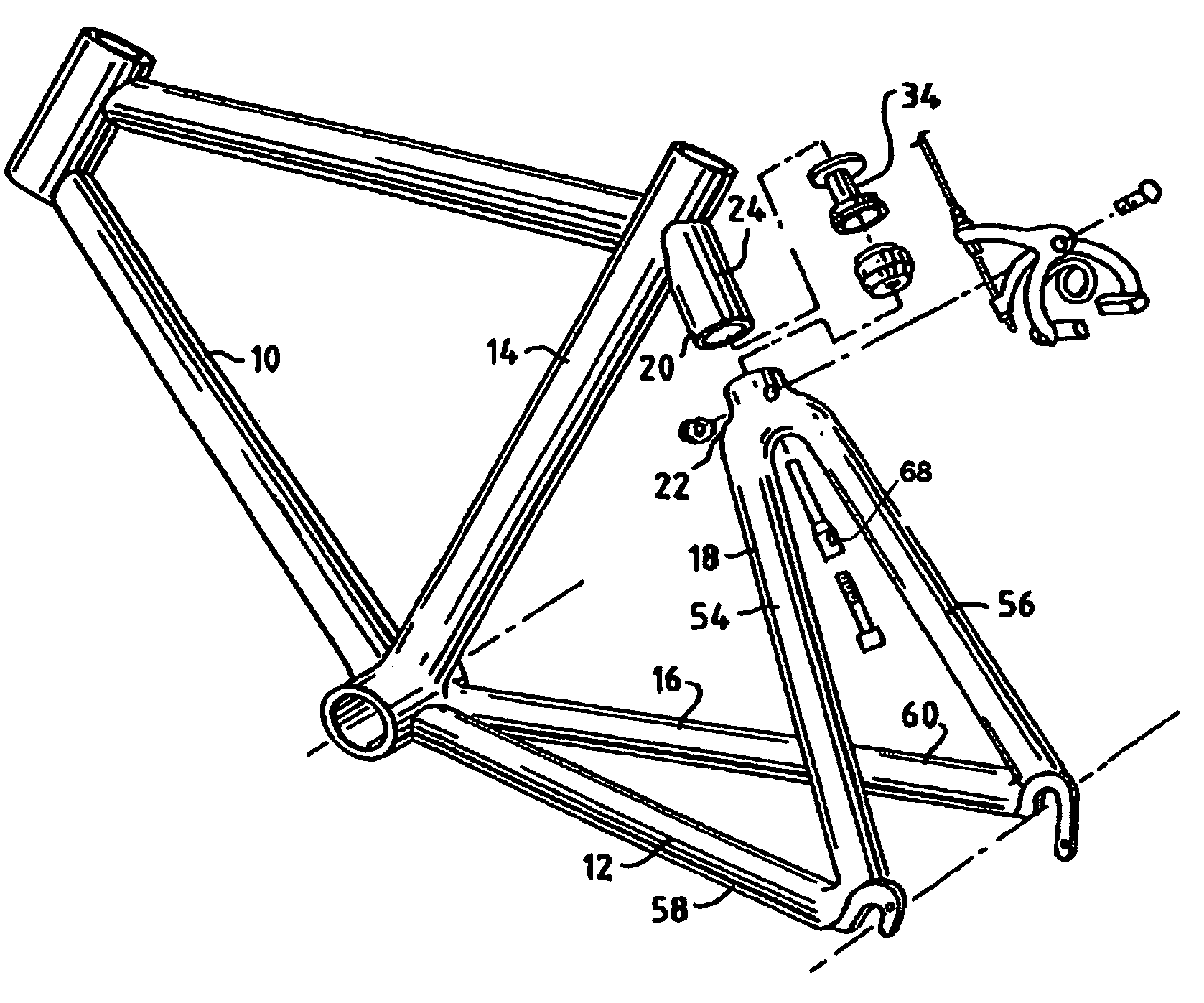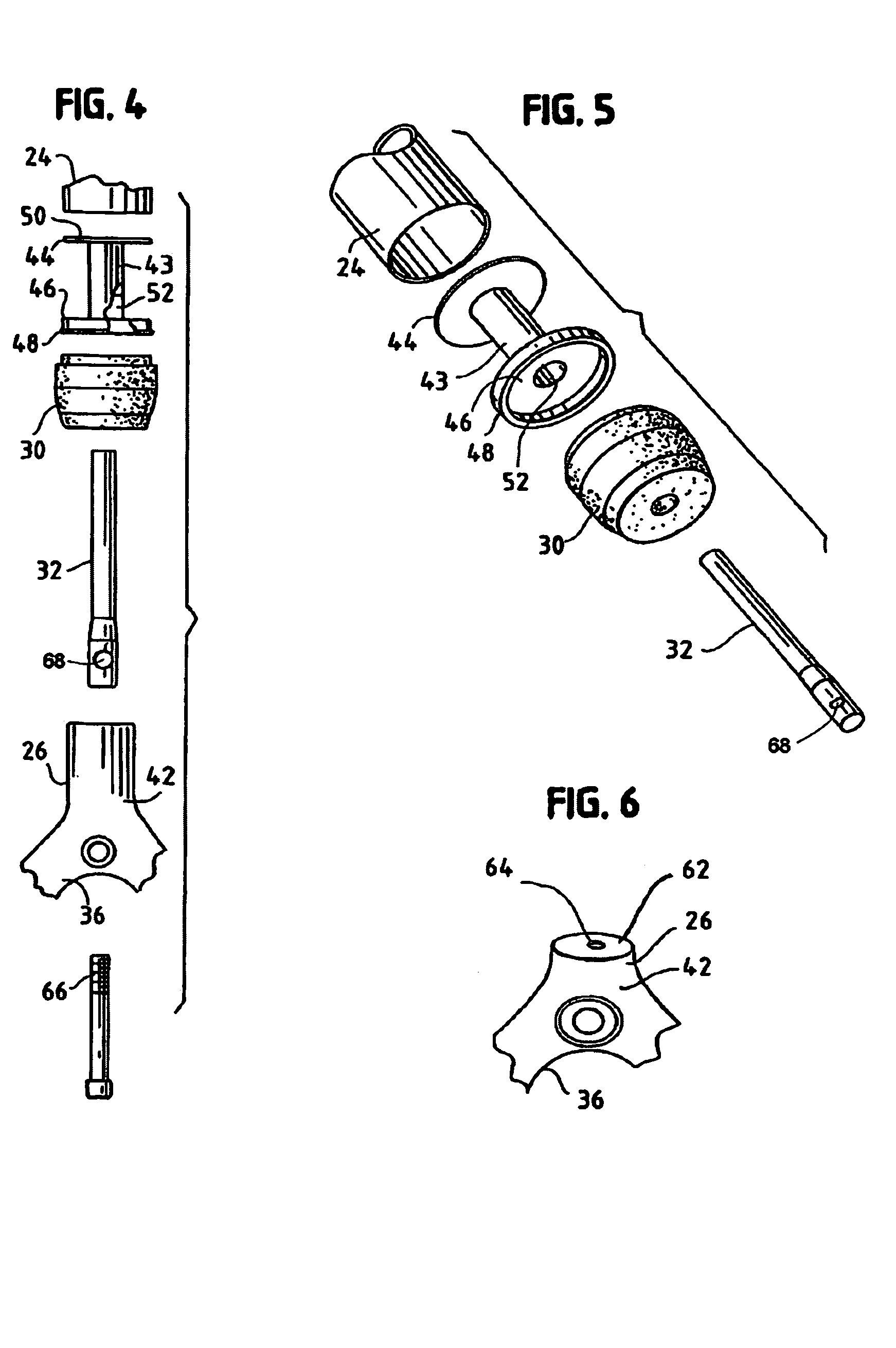Ultra lightweight, high efficiency bicycle suspension
a bicycle suspension, ultra-light weight technology, applied in the direction of bicycle springs, foldable cycles, cycle equipment, etc., can solve the problems of fatiguing and dangerous riders, loss of control of the bike, race damage to riders and their equipment, etc., to achieve the effect of adding weight to the bike, weight and complexity
- Summary
- Abstract
- Description
- Claims
- Application Information
AI Technical Summary
Benefits of technology
Problems solved by technology
Method used
Image
Examples
Embodiment Construction
[0030]A bicycle frame 10 of the well known diamond configuration has head tube, down tube, top tube, and a rear triangle 12 generally made up of a seat tube 14, a chainstay assembly 16 and a seatstay assembly 18. A shock absorber assembly 20 operates in conjunction with the other elements of the rear triangle 12 to provide an ultra lightweight, high efficiency bicycle suspension. The shock absorber assembly is generally identified by reference number 20, while its components are separately described below.
[0031]The invention is adaptable to various tubular section chainstay assemblies. Thus, in an aluminum frame, the lateral width of a cross section of the chainstays is approximately equal to or slightly greater than the vertical height of a cross section of the chainstays. While in a carbon fiber reinforced plastic frame, the height appears to be significantly greater than the width.
[0032]The shock absorber assembly 20 is incorporated into the wishbone 22 of the seat stay assembly ...
PUM
 Login to View More
Login to View More Abstract
Description
Claims
Application Information
 Login to View More
Login to View More - R&D
- Intellectual Property
- Life Sciences
- Materials
- Tech Scout
- Unparalleled Data Quality
- Higher Quality Content
- 60% Fewer Hallucinations
Browse by: Latest US Patents, China's latest patents, Technical Efficacy Thesaurus, Application Domain, Technology Topic, Popular Technical Reports.
© 2025 PatSnap. All rights reserved.Legal|Privacy policy|Modern Slavery Act Transparency Statement|Sitemap|About US| Contact US: help@patsnap.com



